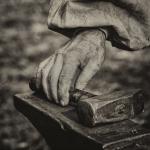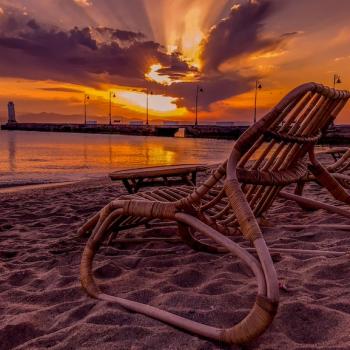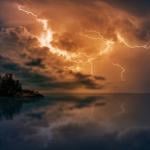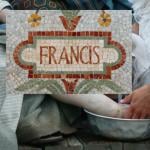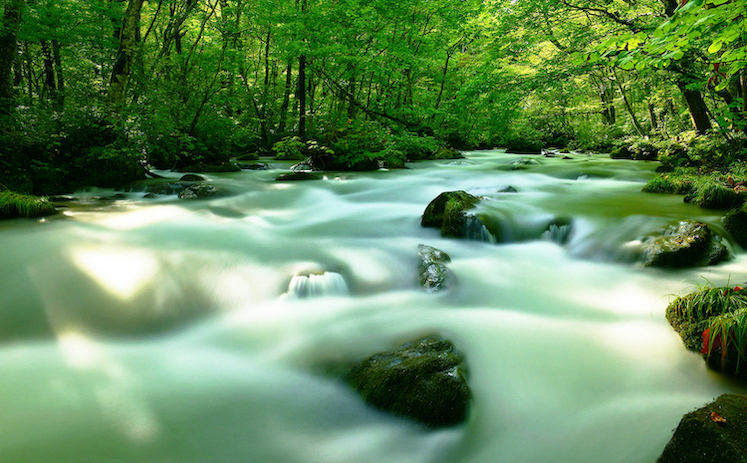
“Wade in the water. God’s gonna trouble the water.” In the centuries-old spiritual, we’re told to wade into the healing water because God will “trouble” the water. In the song, “to trouble” is an old word meaning “to stir up,” and doesn’t necessarily have the modern meaning of trouble as “distress or pain.” But my ears hear a double meaning. I wonder if the double-meaning was intended all along and suspect the people who wrote the song fully appreciated the multi-dimensionality of the word. I wonder: does Spirit sometimes lead us to our healing by allowing us to wander into trouble, where we are knee-deep in distress and pain?
Based on what I have observed in my own life and those of many confidantes, I have to say yes. In no way do I believe in a punishing, sadistic God who causes pain or trouble (in fact, I don’t believe in a personified God, though personification is often the only way to symbolically wrap our minds around a relational divinity). Intimate acquaintance with synchronicity convinces me that God often directs us to safety when we need it. Yet at times it does seem God leaves us to the shunting, disorienting ride of our destructive will—that is, our small self, not the God-filled, integrated True Self. And when our egoistic will is at the helm, trouble usually ensues … eventually ushering us straight into our growth, our learning, our redemption. God’s seeming absence as we wander into trouble is not unloving, but actually the most costly and mature love of all, as anyone knows who has loved with painful, freedom-giving love a young person or intimate boarding a self-destructive ride to maturity.
In many Native cultures, young people are sent on “vision quests” at adolescence. These experiences vary according to culture, but often involve an intentional wandering into trouble. Usually vision quests include long fasts in remote, sacred sites, but also arduous tasks (carrying large boulders up mountains to sacred cairns, for example) that leave the questers bloodied and vomiting and broken. The quest involves a release of control, a “breaking open” accompanied by anguished cries and prayers that create access for visions preparing the quester for vocation.
Vision-quest initiations are pivotal in the spiritual journeys of those who undertake them, which makes me wonder if cultures without formal vision quests force us to stumble into less intentional crises to break us open, making us ready to receive the guidance of Spirit. And if that is the case, maybe Spirit does trouble the water (to use the symbolic image), allowing us to stumble into distress and pain, to guide us to healing and a deeper understanding of life’s purpose.
Franciscan teacher Richard Rohr, questions whether for modern people the “midlife crisis” represents the last chance for the ego to be unseated in the course of a life. He ponders: “[maybe] it’s God’s shaking the tree one last time and challenging us. Will you give up the illusion? Will you stop being just who you think you’re supposed to be and finally be who you really are?” Rohr uses the anthropomorphic symbolism of God “shaking a tree,” which reminds me of “troubling the waters.”
In the same manner that this pattern works in individual lives, it seems to work among collectives of individuals, even nations. Wade in the water, God’s gonna trouble the water. The pattern is there in nature (micro scale), and in the cosmos (macro scale). The pattern of destruction/death and rebuilding/rebirth happens not just once, but over and over in endless succession. Those who live in northern climes see it graphically reenacted before our eyes each winter. Everything must go through the trial. In the spiritual life, we say “you must die before you die.” In nature, we call it the circle of life. Why should we not expect to see this pattern on the national level? As on the personal level, we are on the national level left to wander into a trouble of our own making.
{Read Part Two of this column on Saturday, October 8.}
Thank you for supporting my work by subscribing (free).
Available HERE.



